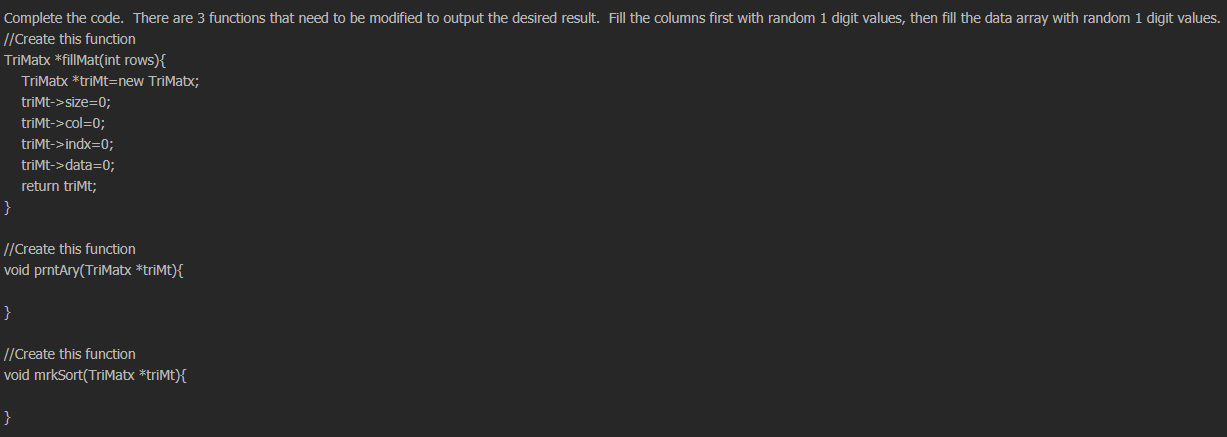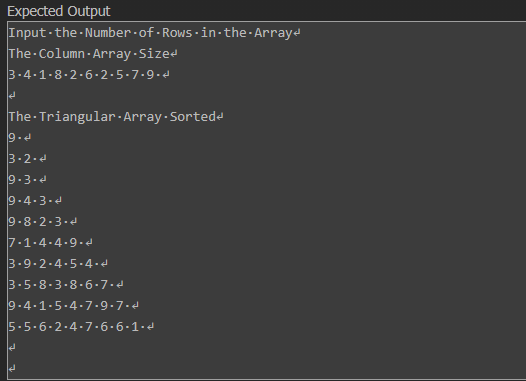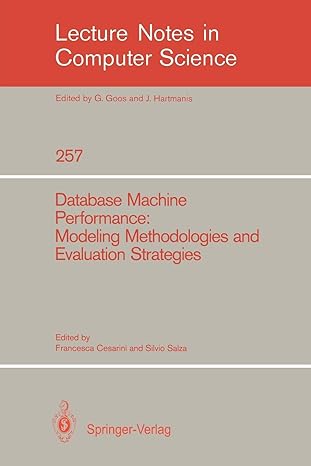Question
answer the following question by modifying the code down below. please use c++ -----------------------------code starts here--------------------------------------------------- //System Libraries Here #include //I/O Library using namespace std;
answer the following question by modifying the code down below. please use c++

-----------------------------code starts here---------------------------------------------------
//System Libraries Here #include //I/O Library using namespace std;
//User Libraries Here struct TriMatx{ int size; //Represents the number of rows int *col; //Represents the column array, i.e. number of columns for each row int *indx; //Represents the index matrix which you can sort to use for display int **data;//Represents the data contents of the Triangular matrix };
//Global Constants Only, No Global Variables //Like PI, e, Gravity, or conversions
//Function Prototypes Here int mrkRand(int=1
//Program Execution Begins Here int main(int argc, char** argv) { //Declare all Variables Here int rowSize; //Number of Rows in the Array TriMatx *triMt;//Triangular Matrix Structure //Input or initialize values Here cout>rowSize; triMt=fillMat(rowSize);//Dynamic triangular array
//Output Located Here coutcol,triMt->size); cout
//Deallocate the structure destroy(triMt); //Exit return 0; }
//Create this function TriMatx *fillMat(int rows){ TriMatx *triMt=new TriMatx; triMt->size=0; triMt->col=0; triMt->indx=0; triMt->data=0; return triMt; }
//Create this function void prntAry(TriMatx *triMt){ }
//Create this function void mrkSort(TriMatx *triMt){ }
void destroy(TriMatx *triMt){ //Delete every row of the triangular array for(int i=0;isize;i++){ delete []triMt->data[i]; } //Delete the pointers delete []triMt->data; delete []triMt->col; delete []triMt->indx; delete triMt; }
void prntAry(int *a,int n){ if(a==0)return; for(int i=0;i cout
int mrkRand(int seed){ //Xn+1 = (aXn + c) mod m //where X is the sequence of pseudo-random values //m, 0
-----------------------------------expected outcome -------------------------------------------

Step by Step Solution
There are 3 Steps involved in it
Step: 1

Get Instant Access to Expert-Tailored Solutions
See step-by-step solutions with expert insights and AI powered tools for academic success
Step: 2

Step: 3

Ace Your Homework with AI
Get the answers you need in no time with our AI-driven, step-by-step assistance
Get Started


